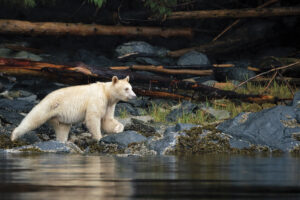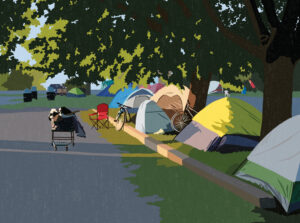
People & Culture
Kahkiihtwaam ee-pee-kiiweehtataahk: Bringing it back home again
The story of how a critically endangered Indigenous language can be saved
- 6310 words
- 26 minutes
This article is over 5 years old and may contain outdated information.
People & Culture

All of Canada is mapped, but not all of it is explored. How can this be?
As recently as 1916, the Geological Survey of Canada estimated that Canada still contained over 900,000 square miles (almost one and a half million square kilometres) of unexplored territory that appeared as blank spots on the map. Despite nearly 75 years of field work that involved sending explorers to canoe down rivers and map as much territory as possible, an aggregate area nearly the size of India remained virtually unexplored.
Technology got the better of us. By the 1920s the Geological Survey began to rely on aerial surveys conducted with airplanes. With the newly invented planes (and later helicopters), surveyors were able to fly over remote stretches of northern Canada taking aerial photographs that could then be used to finish the process of mapping the country. Today, we have progressed to satellites.
But viewing the ground from high above in airplanes, helicopters or satellites is not exploration. As far as actual boots-on-the-ground exploration goes Canada still contains plenty of territory that has no record of any person (living or dead) exploring it.
In my own small way, that is partly what I try to do in Canada’s wilderness: be the first to photograph, film, canoe or record first-hand descriptions of a particular river, lake or area. While my expeditions range across Canada, my particular focus is on the Hudson Bay Lowlands, Canada’s largest wetland. Of the thousands of rivers and creeks in the Lowlands, many remain unnamed and unexplored. Last year I led an expedition sponsored by The Royal Canadian Geographical Society to one such nameless river.
The terrain is pretty much as tough as you can imagine: trackless muskeg, the “quicksand of the North,” endless swamps of small, twisted spruce and tamarack trees, thousands of meandering, rock-strewn creeks and rivers, weedy lakes and millions of black flies. Indeed, my favourite fact about the Hudson Bay Lowlands is it reputedly has the highest concentration of blood-sucking insects in the world.
It the sort of place even Canada’s hardiest wilderness enthusiasts pass over in favour of more picturesque areas of the country. But my philosophy is simple: exploration is about trail-blazing, not following in the footsteps of others. My objective this summer is to canoe a small river that has no previous record of anyone exploring it. In order to reach this river, I will first have to travel down then up two other rivers, through almost a dozen lakes and do about 40 kilometres of bushwhacking on foot. Most of the time will be spent dragging or lining my canoe through shallows and portaging. Actual canoeing will be a rare luxury.
Many consider four adults divided in two canoes to be the minimum safe amount for an extended wilderness journey. I’ll be travelling alone. Some of the dangers I can expect to encounter include forest fires (there are currently over 120 forest fires burning in northern Ontario alone) and hypothermia. I will be traversing the unforgiving seas of James Bay, a body of water with a fearsome reputation among canoeists. Of course, there will also be countless rapids. The last time I was in this neck of the woods, my shuttle driver recounted the cheering news of how the last person to attempt the river I was about to start down drowned. Compared to these concerns, bears hardly rate a mention.
But the obstacles and hazards are all part of the journey, and in my estimation, well worth the price of discovering something new and going where few have gone before.
Are you passionate about Canadian geography?
You can support Canadian Geographic in 3 ways:

People & Culture
The story of how a critically endangered Indigenous language can be saved

People & Culture
The director of the National Centre for Truth and Reconciliation reflects on Indigenous progress in 2017 and looks ahead to 2067

Wildlife
How ‘maas ol, the spirit bear, connects us to the last glacial maximum of the Pacific Northwest

People & Culture
For unhoused residents and those who help them, the pandemic was another wave in a rising tide of challenges